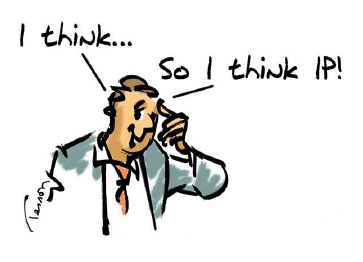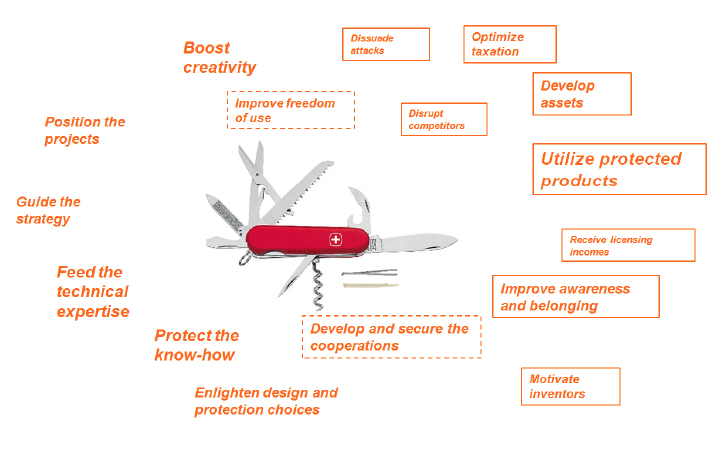Features
Intellectual property as a transversal tool
22 April 2016
4iP Council meets with intellectual property expert, author and teacher, Yann de Kermadec to discuss the current and evolving state of intellectual property.
An expert in innovation management and intellectual property at the Cabinet Julhiet Sterwen Group, Yann De Kermadec also teaches at several French universities and educational institutions for engineers and entrepreneurs. Here he speaks to 4iP Council about the evolving use of intellectual property (IP).

What is your primary interest in IP?
I am interested in promoting a positive and broad view of IP. The image of IP as a weapon, while relevant, is very limited and negative. Intellectual property - and patents in particular - are fantastic tools for cooperating, creating and innovating. At the same time, patents are a powerful strategic tool, a rich information source and a great design language.
How is IP evolving in your view?
Innovators and managers too often see IP and patents in particular as a specialist activity just for legal experts. I believe this view is wrong as the main users of patents are innovators and innovation should be central to patent use.
Since the development of Taylorism[i] after World War II, intellectual property responsibilities have been the domain of the legal team.
But recently intellectual property management is undergoing a major change within companies: intellectual property is becoming ‘everyone’s job’, with the help of IP specialists who play a key role. This is a very positive evolution that should be encouraged.
How do you think organisations should use intellectual property?
Intellectual property, and in particular the patent, is a multi-faceted, strategic tool. I like to think of it like a Swiss Army penknife. It should be understood and used across all organisational levels to encourage creativity and innovation.
Patents : What benefits?
(benefits linked to acquisition of IP rights are framed)

The development of a patent mindset promotes creativity. Creation is a complex activity and developing the patent raises questions that force the innovator to clarify his/her product and compare his/her products to existing ones.
Can you explain your use of ‘means trees’ in order to facilitate understanding patents?
A key question that the patent asks is, ‘what are the new combinations of means proposed?’ This question is brilliant because through it patent offices have invented a language for protection which is logical but also it is a very pure language for design. You could say that the patent is to design what music theory [solfège] is to music. It is a brilliant language.
But there is a big problem: it is difficult for innovators to understand the possible claims to a patent because claims are written in long complex sentences.
The ‘means tree’ allows innovators to visualise possible patent claims through diagrams. Innovators like and easily understand diagrams.
What is your message to CEOs?
It is important to manage companies with IP in mind. The primary user of IP is the CEO, because IP is a key strategic tool . To innovate and ignore IP is like sailing a boat without the sea. It is impossible, in my view, for a CEO not to have a focus on IP. Steve Jobs was a good example of a CEO who had such an insight. He was a creator, an entrepreneur and he was IP minded.
Everyone should be able to participate in innovative projects and be recognised for doing so. All humans have a desire to create and see their creations evolve. People like to have ideas and be associated with their development. A ‘patents culture’ helps everyone to create!
What is your message to policy-makers?
The current patent system is excellent. It is the best tool we have for structuring knowledge and innovating. I encourage policy-makers to understand the way the patent system is applied and again to look at it like a Swiss Army penknife with its numerous uses.
The culture of protectionism, threats and fighting that we have seen recently in cases such as Apple-Samsung is not the best use of IP. Some people make money from it but it is a parasitic business.
We must also look at the origin of intellectual property, returning to the roots of its creation - to the fantastic spirit of IP - in order to foster the right system. IP is a tool to facilitate cooperation and growth for all. We live in a knowledge society and must promote the best use of that knowledge.
Could the European patent system be improved?
Many say patents are unreadable. Yet in the patent system we have a superb language for design that is widely accessible through the use of ‘means trees’. We must enable non- specialists to use the system. For this to happen, we need to ensure that patents are of high quality and use best practice from other national and international systems.
For example, all patent systems require people to describe their idea but the US patent system requires that the description be categorised into items, providing greater clarity for the reader. The Japanese system provides similar clarity with a patent summary page that is broken down into ‘problem to be solved’ and ‘solution.’
Patents should also be written collectively, not just by lawyers, because the patent’s value depends on one’s strategic position. In Europe we must also develop an intellectual property mindset across national education to encourage good use of IP and discourage negative use.
What is your message to the inventor?
Improve your skills to be able to use patents effectively. Understand the Swiss Army penknife analogy to see all the multiple uses of patents and familiarise yourself with the language. This will improve your ability to invent, co-operate and develop partnerships.
To read more about Yann de Kermadec’s perception of the benefits and evolution of IP a summary of his recent paper “Companies best practice for managing IP,” can be downloaded here.
Yann’s publications include:
- Innover grâce aux brevets, INSEP Editions, 1999-2001
- Innover, c'est l'affaire de tous, INSEP Editions, 2003-2009.
- La propriété intellectuelle au service de l'innovation, NATHAN, 2005-2009 (avec Pierre Breesé).
- PME : pensez propriété intellectuelle !, DGCIS, 2010 (avec Pierre Breesé).
Author: Emma Bluck
The views expressed in this feature are those of the interviewee and may not reflect the views of 4iP Council or its members. The purpose of this feature area is to reflect thinking on the topic of intellectual property and enable open discussion.



